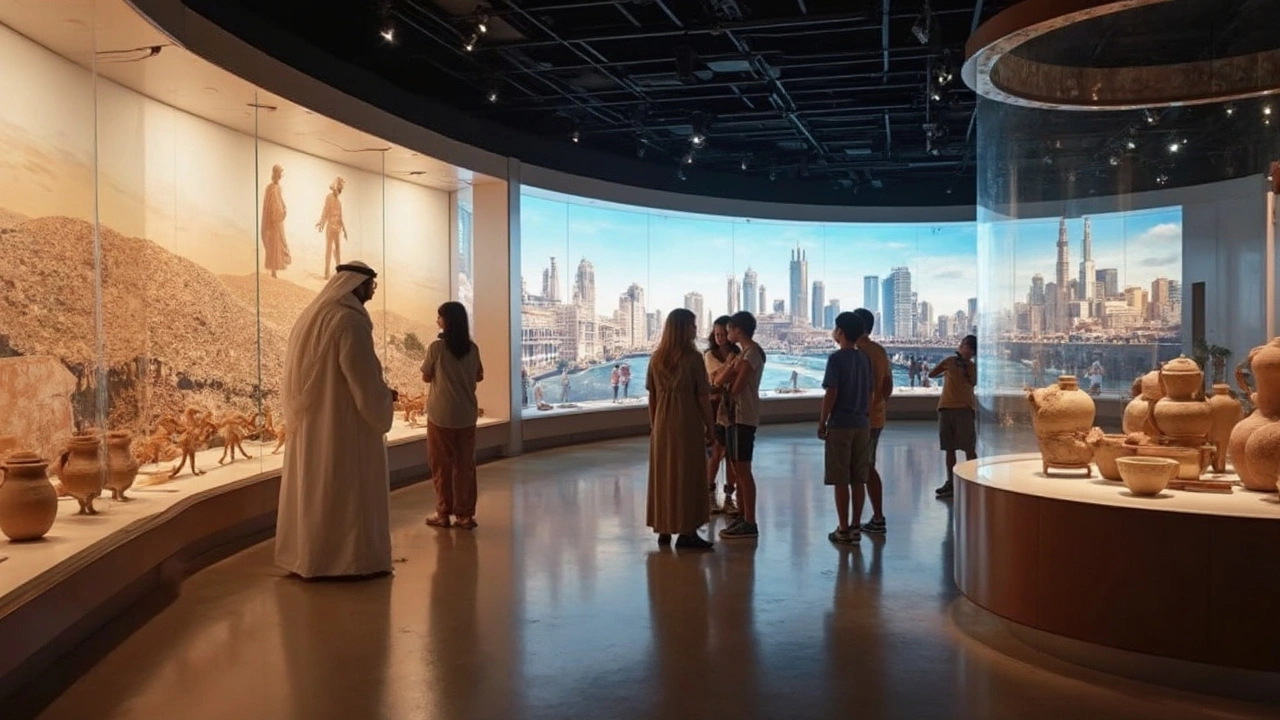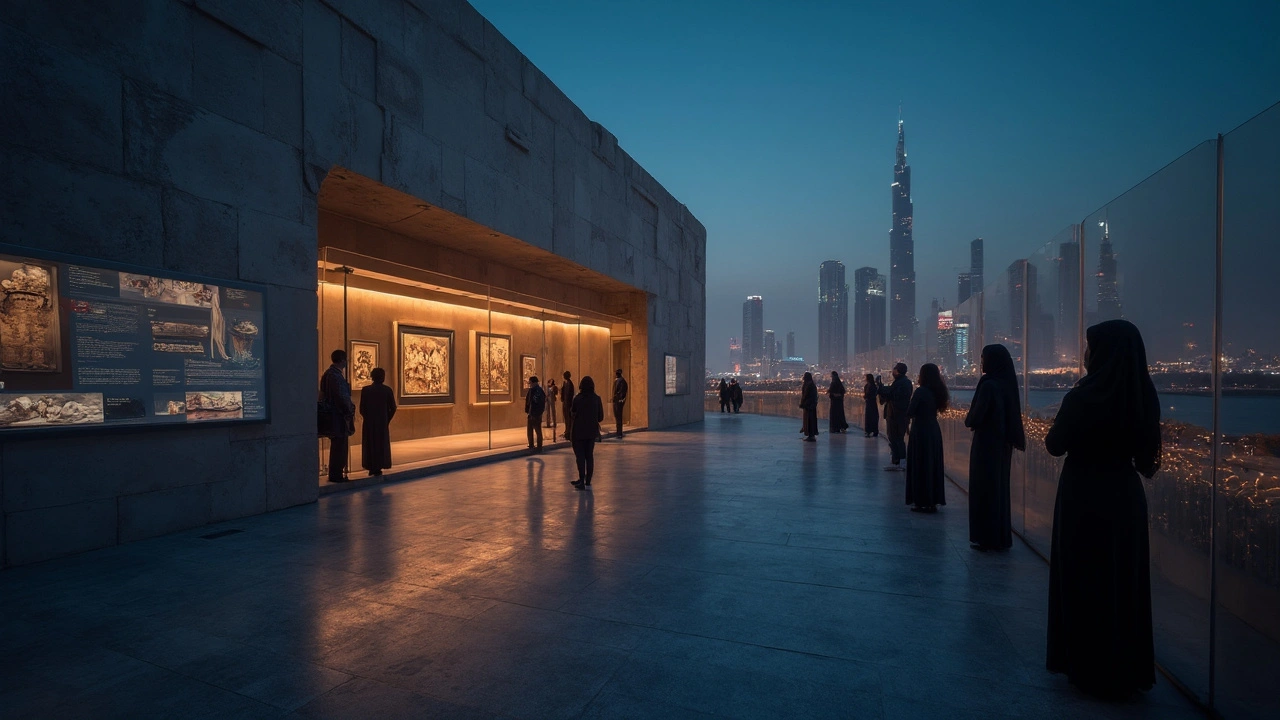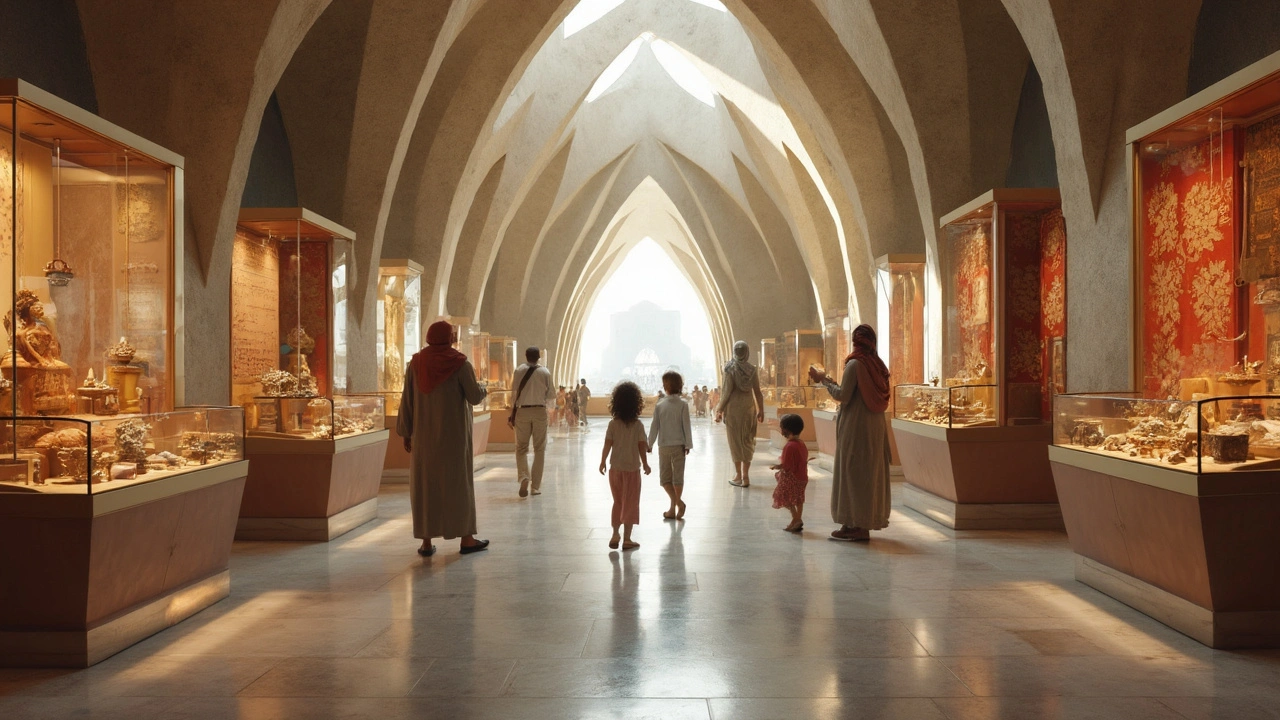If you think museums are just quiet spaces full of dusty old stuff, you’re missing the real magic. Walk into any big-name museum and you get an instant pass to centuries of human creativity, achievements, disasters, and comebacks—all under one roof. Popular museums don’t just put things behind glass; they actually protect stories that would otherwise disappear.
Ever noticed how schools, parents, or even tourists flock to places like the Louvre, The Met, or London’s Natural History Museum? It’s not just for taking selfies with mummies or dinosaurs. People are looking for a real connection—to understand what shaped our world, and what we might be losing if we don’t pay attention.
There’s a reason my daughter Lorelai gets more excited about ancient Egyptian jewelry at the museum than in any history class. Museums turn boring facts into real-life mysteries you can sniff, squint at, and sometimes even touch. Even better, they make culture accessible to everyone, not just the experts. And in a world where fake news and AI-generated facts are everywhere, museums give us proof—actual physical evidence—of where we come from.
Visiting a popular museum isn’t just a casual outing. It’s like jumping into a time machine, coming face-to-face with people and ideas that shaped today’s world. And surprisingly, these museums don’t only show us the past; they work nonstop behind the scenes to save and restore things you’d never even think about, especially if there’s a disaster or political unrest. It all adds up to this: without popular museums, we’d lose way more than just a couple of old paintings. We’d lose huge chunks of who we are.
- Key Takeaways
- Why Museums Matter for Cultural Heritage
- Ways Popular Museums Preserve History
- How to Make the Most of Your Museum Visit
- FAQs About Museums and Cultural Heritage
Key Takeaways
Here’s what you really need to know about the role of popular museums in preserving cultural heritage—no jargon or museum speak:
- Popular museums like the Louvre, the Smithsonian, and the British Museum safeguard priceless cultural objects and make them accessible to millions every year.
- These museums don’t just display stuff—they preserve history, protect it from damage, repair what’s broken, and track every artifact’s story so it doesn’t get lost to time.
- Cultural heritage isn’t just ancient art and artifacts. It covers music, science, clothing, photos, and even things like protest art or championship sports gear.
- Museums are action heroes during crises; for example, in 2022, the National Museum of Ukraine played a big role in protecting artworks from war damage, showing how museums safeguard heritage in real emergencies.
- Visiting a popular museum is more than sightseeing. You’re getting hands-on lessons in history, science, and art—plus you can usually touch some things or join interactive workshops, making learning fun for all ages.
| Museum | City | Annual Visitors |
|---|---|---|
| Louvre | Paris | 8.9 million |
| Vatican Museums | Vatican City | 6.7 million |
| The Metropolitan Museum of Art (The Met) | New York | 5.4 million |
So, not only are we talking about preserving old stuff, but these museums are also visited by millions, making heritage part of everyone’s life.
Why Museums Matter for Cultural Heritage
If you ever wonder why we spend so much effort on cultural heritage, think about what would happen if it vanished overnight. That’s where popular museums step in—they’re the main defense for saving and sharing the core of our history.
Let’s face it: old photos, artworks, and artifacts are more than just stuff. They’re proof of where we came from. The British Museum, for instance, holds over eight million objects. That’s not just bragging rights—it’s about letting the world see pieces of history that would be scattered, stolen, or even destroyed if left unprotected. When you visit, you’re literally seeing rare items that survived wars, climate disasters, or just getting lost over generations.
Some museums are even first responders when disaster strikes. The Louvre famously hid its most important paintings from the Nazis in World War II, moving hundreds of treasures to the French countryside. More recently, museums have jumped in after natural disasters like earthquakes to help recover and conserve items before they’re gone for good.
- Education is huge. Museums turn history lessons from textbooks into experiences. They run school events, workshops, and tours, helping kids (and adults) connect with the real deal—think of it as the ultimate field trip.
- Community pride gets a boost. Museums don’t just tell national stories; many focus on local culture. In New Orleans, for example, the Ogden Museum tells the story of the American South through real objects you can see up close.
- Preservation is nonstop. Behind locked doors, staff repair paintings, scan old manuscripts, and even use 3D printers to rebuild broken statues. Most of the action happens when the museum is closed—so next time you’re walking past, just picture the after-hours superhero team inside.
If you want proof that popular museums still matter, just look at the numbers. Here’s how some big ones stack up:
| Museum | Yearly Visitors (2023) |
|---|---|
| Louvre (Paris) | 8.9 million |
| Metropolitan Museum (NYC) | 6.3 million |
| British Museum (London) | 5.8 million |
That’s not just tourists killing time—it’s millions of people learning, sharing, and bringing home a bit of history every year. When you support or visit a museum, you’re not just filling a rainy afternoon. You’re helping to keep culture—and truth—alive for everyone who comes after us.

Ways Popular Museums Preserve History
If you’ve ever stopped to think about all the things that could go wrong for our cultural heritage—fires, floods, wars, even basic neglect—it’s pretty wild that so much survives. The big secret? Popular museums work quietly (and sometimes frantically) behind the scenes to save history before it disappears for good. Here’s how they actually do it:
- Conservation Labs: Most popular museums have top-notch labs packed with scientists, conservators, and the latest tech. At the Smithsonian, teams use everything from microscopes to 3D scanners to fix paintings, texts, and even clothes, making sure those old relics don’t fall apart on their watch.
- Climate Control: Museums don’t mess around with temperature and humidity. The British Museum, for instance, keeps their rooms at steady temps and uses filtered air to keep dust and pollution away from stuff like ancient scrolls and textiles. One wild fact: even a few degrees of fluctuation can destroy centuries-old paper or fabrics.
- Storage Vaults: You’d be shocked how much of a museum’s collection is kept in storage. At the Louvre, only 5-10% of artifacts are actually on display, while the rest sit in massive, climate-controlled vaults—safeguarding them until it’s their turn in the spotlight.
- Digital Archiving: Digital backup is a game-changer. The Metropolitan Museum of Art digitized over 400,000 works—high-res images and detailed info folks can access from anywhere. That means even if something gets lost or destroyed, the knowledge is still out there.
- Disaster Response: When disaster strikes (like floods or earthquakes), museum teams jump in. The Getty Museum has flown teams to areas hit by hurricanes to help save local art and cultural treasures, showing these places care about heritage everywhere, not just in their own walls.
- Public Education: It’s not all behind-the-scenes magic. Interactive exhibits, audio tours, and hands-on workshops teach you how and why we keep this stuff safe. Kids (and adults) can actually try out preservation techniques or learn the science of why things decay, making the process less mysterious and more accessible.
| Popular Museum | Number of Items Preserved | % On Display |
|---|---|---|
| Smithsonian Institution | 154,000,000+ | 1% |
| The Louvre | 480,000+ | 8% |
| British Museum | 8,000,000+ | 1% |
So next time you stroll past a shiny artifact or a faded painting, remember it took a whole lot of teamwork, science, and straight-up hustle to get it there. Popular museums aren’t just keeping cool stuff safe—they’re making sure our whole story doesn’t get lost in the shuffle.
How to Make the Most of Your Museum Visit
So you’re planning a day at one of those popular museums—maybe the British Museum in London or the Smithsonian in D.C.? Good call. To really get something out of your visit, it pays to go in with a game plan. These places can be overwhelming (some have more than two million items!), so let’s talk about simple ways to actually enjoy and remember your experience.
- Do a Quick Prep: Check the museum’s official website before you visit. Most popular museums share floor maps, special exhibit news, and even the best times to visit if you hate crowds. Hint: Weekday mornings are usually way quieter than weekends.
- Pick a Theme or Focus Area: Don’t try to see everything—nobody expects you to! Focus on an area that’s actually interesting to you or your group. Love ancient cultures? Head right to that section. Into modern art? Stick with those galleries and really soak it in.
- Download the App or Grab an Audio Guide: Many museums, like the Metropolitan Museum of Art, offer free or low-cost apps and audio tours. These are gold for learning cool stories behind the displays. Some even have family and kids’ tracks, which helped me keep Lorelai busy during our last visit.
- Join a Guided Tour: If you want some inside scoop, guided tours often reveal fun facts or take you off the usual path. At the Louvre, for example, the guides share little-known details about how the Mona Lisa survived during World War II.
- Pack Smart: Bring snacks (if allowed), water, and a notebook to jot down things that catch your eye. Some museums let you sketch, which is a quiet way to really take in the art.
Here’s a quick look at how some of the top museums make it easy for you to get involved:
| Museum | Family Activities | Audio Tours | Free Admission |
|---|---|---|---|
| Smithsonian National Museum of Natural History | Yes | Yes | Yes |
| Metropolitan Museum of Art | Yes | Yes | Some days/times |
| Louvre Museum | Yes | Yes | No |
If you’ve got kids, ask the front desk for a scavenger hunt sheet or a junior explorer booklet. Many popular museums create these so younger visitors can spot certain objects and earn a small prize. Trust me, it keeps everyone active and happy.
One last tip: Snap photos (where it’s allowed), but don’t forget to put your phone down and just look. Sometimes the coolest details—like secret signatures in Renaissance paintings or tiny fossils in a dinosaur bone—are easy to miss if you’re glued to a screen.
A little planning means less stress and way more fun, plus you’ll have real memories to talk about instead of blurry snapshots.

FAQs About Museums and Cultural Heritage
Got questions about popular museums and how they protect cultural heritage? You’re not alone. Here are some straight-up answers to the stuff people actually wonder about.
-
How do museums decide what’s worth preserving?
Most big museums have entire teams—called curators—who research what objects best show our history, art, or science. They look at an item’s age, authenticity, condition, and whether it helps tell a bigger story. For example, the British Museum houses artifacts from all over the globe, but every piece relates to some big event in human culture. -
Are museums just about old stuff?
Not at all! There’s way more than ancient pottery and oil paintings. Museums also showcase modern art, science, tech, and even pop culture. Famous places like MoMA in New York or the Science Museum in London feature everything from digital art to robots and video games. -
Do museums actually help local communities?
Absolutely. Many offer programs for kids, free entry days, and classes. In 2024, over 70% of US museums provided education to schools in their districts. Museums can also boost local pride and create jobs. -
What does "preserve cultural heritage" really mean?
It means keeping objects, stories, and traditions safe so future generations can learn from them. It’s not just about preserving objects but the knowledge, background, and traditions that come with them. -
How do museums prevent damage to things that are hundreds or even thousands of years old?
They use climate-controlled rooms, careful lighting, and regular inspections. Some artworks get rotated so light exposure doesn’t cause fading. Plus, restoration specialists work behind the scenes to fix broken or aging pieces. Here’s a quick look at common methods:- Humidity & temperature control
- Protective display cases
- Regular cleaning using special tools
- Conservation labs for serious repairs
-
Can I donate to a museum or volunteer there?
Totally! Most big museums accept donations or run memberships. Volunteering is also a big help—think tour guides, educational helpers, or behind-the-scenes support.
| Museum | Annual Visitors (2023) |
|---|---|
| Louvre (Paris) | 8.9 million |
| The Met (New York) | 5.4 million |
| British Museum (London) | 5.8 million |
Got more questions about preservation, education, or just where to find the weirdest artifact in your local museum? Check their websites—they’re full of cool info and resources. And don’t forget, most popular museums have virtual tours if you can’t visit in person.







